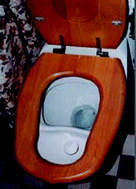An economic appraisal of using source separation of human urine to contain and treat endocrine disrupters in the USA
Abstract
Elevated concentrations of

* Corresponding authors
a
University of Hawaii, Department of Civil and Environmental Engineering, 2540 Dole Street, Holmes 283, Honolulu, HI 96822, USA
E-mail:
lamichha@hawaii.edu, rbabcock@hawaii.edu
Fax: +1 808 956 5044
Tel: +1 808 956 7358
Elevated concentrations of

 Please wait while we load your content...
Something went wrong. Try again?
Please wait while we load your content...
Something went wrong. Try again?
K. Lamichhane and R. Babcock, J. Environ. Monit., 2012, 14, 2557 DOI: 10.1039/C2EM30254C
To request permission to reproduce material from this article, please go to the Copyright Clearance Center request page.
If you are an author contributing to an RSC publication, you do not need to request permission provided correct acknowledgement is given.
If you are the author of this article, you do not need to request permission to reproduce figures and diagrams provided correct acknowledgement is given. If you want to reproduce the whole article in a third-party publication (excluding your thesis/dissertation for which permission is not required) please go to the Copyright Clearance Center request page.
Read more about how to correctly acknowledge RSC content.
 Fetching data from CrossRef.
Fetching data from CrossRef.
This may take some time to load.
Loading related content
